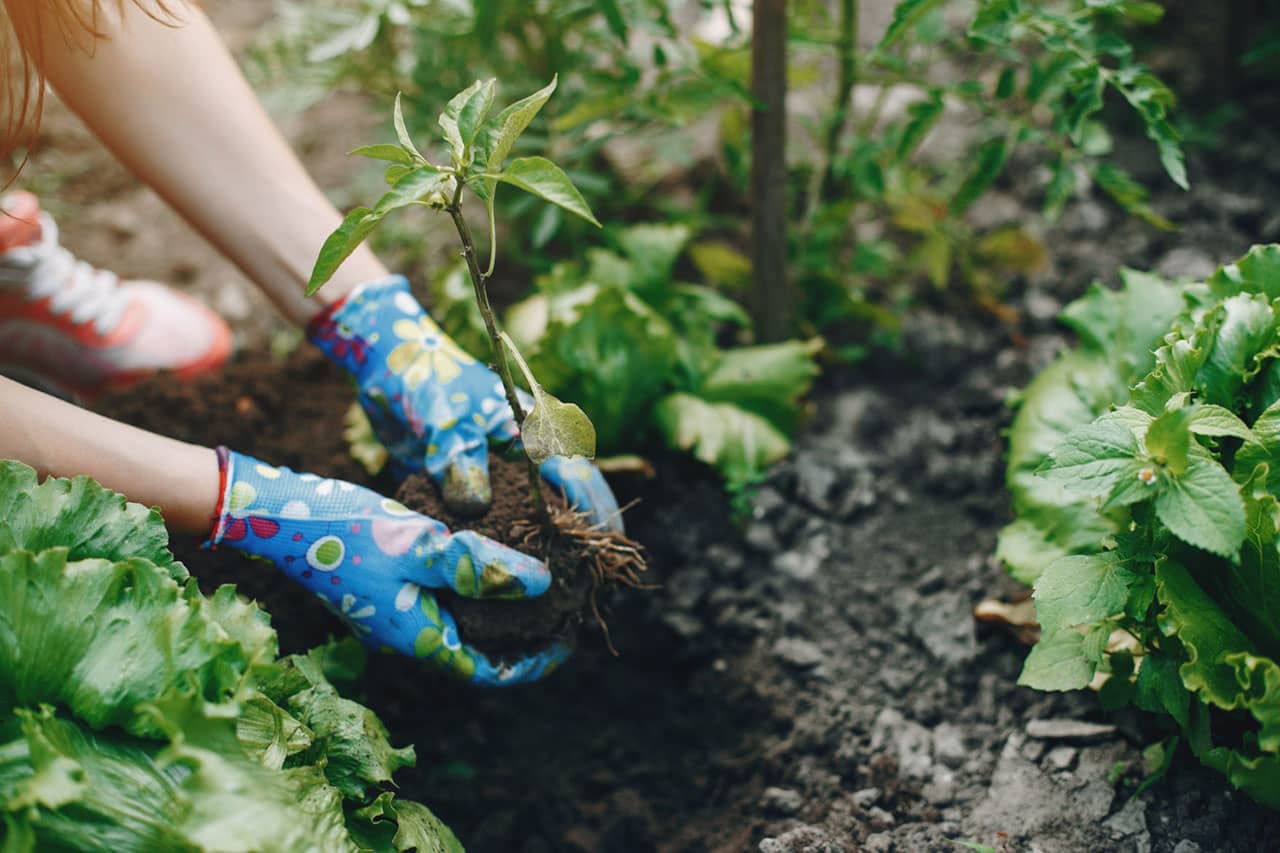The concept of sustainable gardening is becoming increasingly popular amongst gardeners of all levels. By taking a holistic approach to gardening, it is possible to create a garden that is aesthetically pleasing and works in harmony with nature. Sustainable gardening is an environmentally responsible way to garden, incorporating principles of conservation and self-sufficiency.
Sustainable gardening aims to create an ecosystem where nature is in balance, working together to create a flourishing and low-maintenance garden. It is a practice that is done with the environment in mind, avoiding chemical pesticides and fertilizers in favor of natural alternatives. This helps to protect the soil, prevent water runoff and pollution, and preserve local wildlife and plant species.
When taking a sustainable approach to gardening, it is important to consider the resources available, such as soil, water, and sunlight, and how to make the most of them. It is also important to think about reducing the environmental impact of gardening, such as limiting waste and using resources. To do this, it is necessary to make informed decisions about what plants to grow, how to manage weeds, and how to maintain the soil.
Gardening in a sustainable way is not only beneficial for the environment, but it can also help to save time and money. By consciously utilizing resources, such as using native plants, natural fertilizers, and natural pest control, gardeners can create a low-maintenance, healthy garden.
This article will discuss the eight key principles of sustainable gardening. We will look at how to utilize native plants, practice natural weed control, choose the right soil, conserve water, intercrop, reduce pests, and utilize natural fertilizers. We will also discuss why sustainable gardening is important and the benefits it can bring. By following these principles, gardeners can create a beautiful and eco-friendly garden.
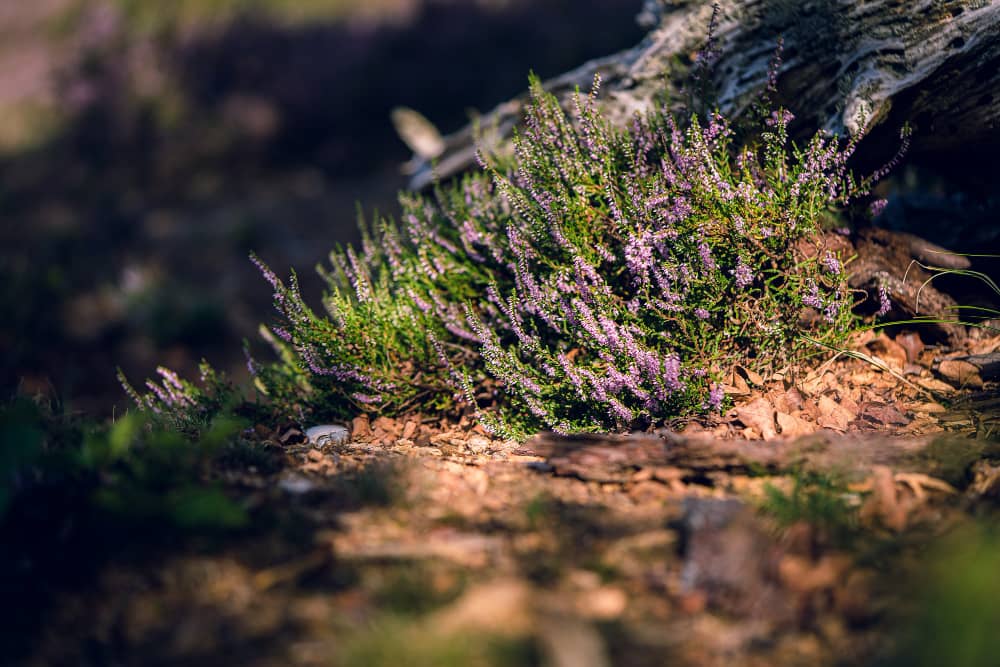
Utilizing Native Plants
Native plants are essential for sustainable gardening efforts. When choosing plants for your garden, it is important to select species that are native to your region. Native plants are usually more resistant to local pests and disease, require less fertilizer and water, and are more likely to provide food and shelter to wildlife.
Benefits of Native Plants:
Native plants are better for the environment because they have evolved over time to form a complex relationship with local wildlife. When gardening with native plants, you can expect there to be less stress on the local ecosystems, reduced competition from non-native species, and improved soil quality. Native plants also provide food and shelter to local wildlife, helping to create a balance in a garden setting.
How to Incorporate Native Plants in Your Garden:
When incorporating native plants in your garden, it is essential to research the types of plants that are native to your region. Choose various plants that will provide food and shelter for local wildlife. Also, consider plants that help to enrich the soil with nutrients and attract beneficial insects.
Once you have chosen the plants for your garden, it is crucial to prepare the soil. Work in organic material such as compost or manure and choose a planting site that will provide adequate sunlight and water. Plant the native plants at the appropriate depth and spacing, then mulch the soil to help retain moisture and prevent weeds.
It is also essential to provide a habitat for wildlife in your garden. Consider adding a pond, bird bath, or birdfeeders to attract birds and other wildlife—plant shrubs and trees to provide cover and a food source. Leave dead branches and logs in place to provide homes for birds and insects.
When gardening with native plants, it is vital to practice proper maintenance. Deadhead spent blooms and pull weeds regularly to keep your garden looking its best. Prune and trim the plants regularly to maintain their health and growth. And be sure to water your plants during dry periods to keep them thriving.
By utilizing native plants in your garden, you can create a sustainable and harmonious environment. Native plants are hardy and resilient and require less maintenance, allowing you to enjoy a beautiful and healthy garden. Plus, you can rest easy knowing that you are helping to protect local wildlife and promote a balanced ecosystem.
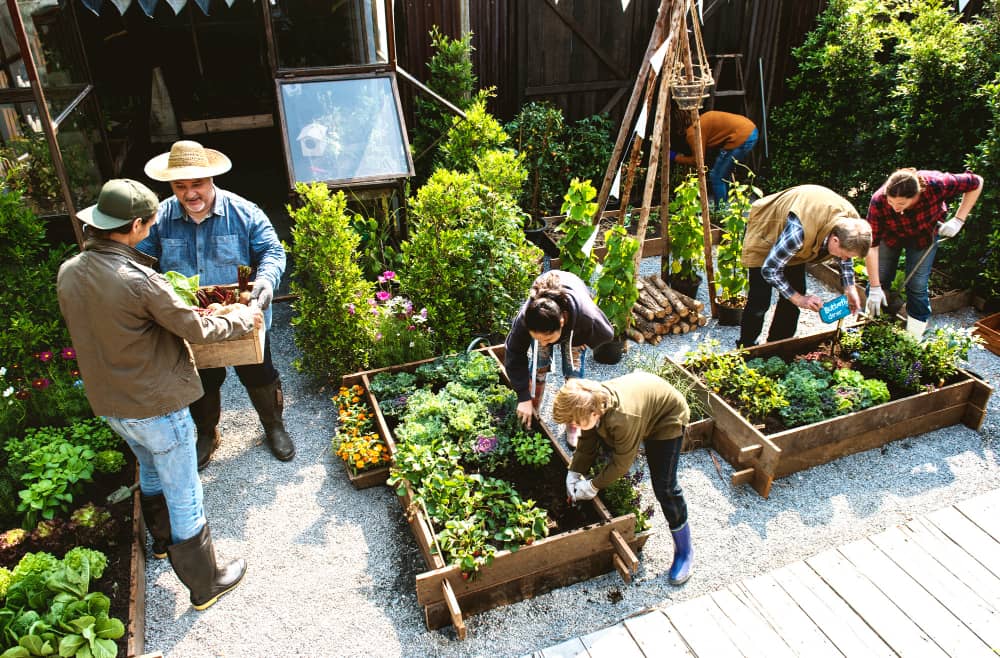
Practicing Natural Weed Control
Weeds are perhaps the bane of many gardeners’ existence. But instead of turning to pesticides and herbicides to rid your garden of them, why not practice natural weed control? This method of weed management is both eco-friendly and beneficial for the environment.
Identifying Weeds
The first step to natural weed control is identifying which plants are weeds and which are desirable plants. A weed is a plant growing out of place, so much of this task is knowing which plants you want in your garden. Once you’ve identified the weeds, you’ll be better prepared to take action.
Using Natural Methods to Remove Weeds
Once you’ve identified the weeds, it’s time to take action. One of the best ways to do this is to pull them out by hand. This is labor-intensive, but it’s also very effective. Another natural method of weed management is to use mulch, which can help prevent weed seeds from germinating. Mulch can also help retain moisture and suppress weeds.
Another natural weed control method is to use a flame weeder. This is a device that uses a propane flame to burn off weeds. It’s an effective control method, but it must be used cautiously, as it can cause damage to desirable plants if not used properly.
A less conventional method of weed control is to use goats. Goats are natural browsers who’ll happily munch away at any weeds in your garden. They’re also great at keeping down grasses and undesirable plants.
Finally, you can use companion planting to help control weeds. This is a method of planting certain plants close to each other to help reduce weed growth. This works because some plants can provide a shade canopy that blocks out light, thus preventing weed germination.
These are just a few natural weed control methods you can use. You can keep your garden free of weeds with some creativity and effort while creating a safe and healthy environment.
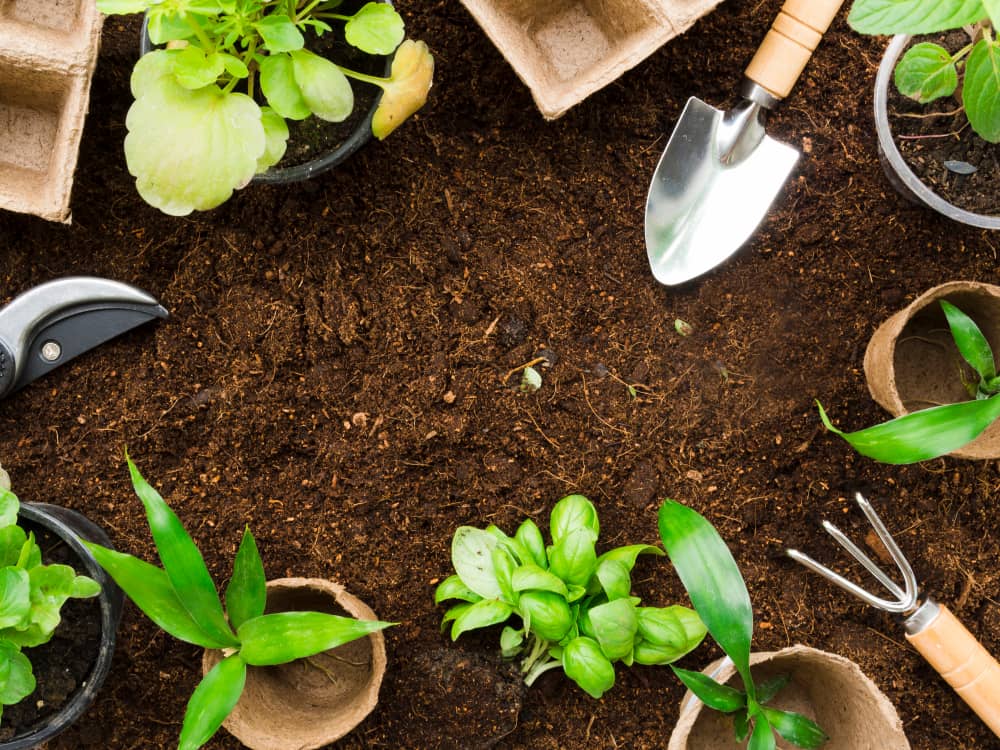
Choosing the Right Soil
When it comes to gardening, your soil is the foundation for success. Choosing the right soil for your garden ensures your plants thrive. Sustainable gardening requires selecting soil that will work in harmony with nature. Here are some tips for choosing the suitable soil for your sustainable garden.
First, consider soil for your garden’s structure and composition. Soil structure refers to the arrangement of individual soil particles. The particles should be clumped into aggregates, allowing air and water to flow freely. When these particles are held together, organic matter and other nutrients are more likely to be retained in the soil, providing optimal conditions for plant growth.
In terms of composition, organic matter is the most crucial element of soil. Organic matter contributes to soil fertility by providing essential nutrients such as nitrogen, potassium, and phosphorus. It also helps to improve soil structure, making it easier for plant roots to grow. Therefore, selecting soil with a high amount of organic matter is essential. The best way to do this is to look for grounds labeled “rich in organic matter” or “high in organic content.”
When choosing soil for your garden, consider its pH level. The soil’s pH level determines how well plants can absorb nutrients from the soil. The ideal pH level for most plants is 6.5-7.5. You can use a soil test kit to determine the pH level of your soil.
Consider the climate and drainage of your garden. Soil should be well-draining and able to retain moisture without becoming overly saturated. If your soil is too clay-like, you may need to add compost or mulch to improve drainage. Select soil with high water retention if your garden is in a hot, arid region.
By considering these factors when selecting soil for your garden, you can ensure that your garden will be in harmony with nature. With suitable soil, you can create a sustainable garden with thriving plants.
Conserving Water
Water conservation is an integral part of sustainable gardening. By conserving water and using more efficient irrigation methods, we can reduce the water needed to maintain our garden and help preserve the environment.
Selecting Water-Conserving Plants
Choosing drought-resistant plants is an excellent way to conserve water in the garden. Native plants are usually drought-resistant because they are adapted to the local climate, requiring less water, fertilizer, and maintenance than non-native plants. Additionally, plants well-suited to your environment are more likely to thrive in your garden.
Installing a Rain Barrel
Installing a rain barrel is an effective way to reuse rainwater for your garden. Rain barrels are easy to install and can capture and store rainwater for later use. Rain barrels are usually made from recycled or upcycled materials and are readily available in various sizes. When rainwater is collected, it can be used to water plants or even help clean up around the garden.
Mulching
Another great way to conserve water in the garden is by mulching. Mulching covers the soil with organic materials such as bark, wood chips, straw, or leaves. Mulching helps to reduce water evaporation and helps to keep the soil cool and moist. It also helps prevent weeds from germinating and keeps the ground debris-free.
Drip Irrigation
Installing a drip irrigation system is also an efficient way to conserve water in the garden. Drip irrigation systems are designed to slowly and evenly release water to plants without wasting any water. They are especially effective for gardens with shallow-rooted plants or requiring frequent watering. Drip irrigation systems are also an excellent way to ensure the soil is evenly moist and can be set up to water plants at certain times of the day.

Water Conservation Tips
Lastly, you can follow a few simple tips to conserve water in your garden. Check your garden for any leaks or pipes that need to be fixed. Ensure to water plants only when needed and in the morning or evening when temperatures are cooler. Additionally, use a layer of mulch around your plants and group plants with similar water needs together so you don’t have to water them as frequently.
By implementing these water conservation tips, you can help conserve water and reduce water usage in the garden. Sustainable gardening is an essential part of caring for the environment, and by making minor changes to your garden, you can make a big difference.
Intercropping and Crop Rotation
Intercropping and crop rotation are essential for sustainable gardening. Intercropping is growing two or more crops together in the same space. This traditional form of garden management benefits both plants and gardeners. When employed correctly, it helps to increase crop yields, reduce pest and disease pressure, conserve water, and improve soil fertility.
Crop rotation is another traditional form of garden management used for centuries to increase soil fertility and reduce pest pressure. This practice involves changing the type of crop grown in a particular area each year. By rotating different crops, gardeners can reduce the buildup of pests and diseases, increase the soil’s fertility, and avoid a depletion of certain nutrients.
Benefits of Intercropping
Intercropping has many benefits for gardeners. It can increase crop yields by allowing plants to take advantage of other garden areas’ different soil conditions and resources. It can also help reduce pest and disease pressure, as different plant varieties attract pests and diseases. Intercropping can also help to conserve water, as some plants naturally use more water than others. Finally, intercropping can help to improve soil fertility, as plants with different root systems help to break up compacted soil and allow more nutrients to be taken up.
Crop Rotation Methodology
Crop rotation is best practiced by following a three-year rotation plan. This plan should include a mix of plants from the three primary crop families: legumes, grains, and grasses. Planting a mixture of these crop families each year helps to ensure that the soil nutrition balance is maintained and that pest and disease pressure is reduced. It is important to note that some crops, such as potatoes, do not fit into these three categories and should be excluded from the rotation plan.
The three-year rotation plan starts with legumes. Legumes, such as peas and beans, are nitrogen-fixing plants. The roots of these plants form nodules that contain bacteria, which take nitrogen from the air and convert it into a usable form of nitrogen for the plant. This makes legumes an excellent choice to start a rotation plan, as they will add nitrogen to the soil, benefiting subsequent crops.
The second year of the rotation should include grain crops, such as corn, wheat, and oats. These crops are all heavy feeders and will benefit from the nitrogen added to the soil by the previous legume crop. Finally, the third year should include grasses like clover and hay. These crops help to break up compacted soil and can often be used as a cover crop to help protect the soil from erosion and compaction.
By following a three-year rotation plan, gardeners can achieve a healthy balance of soil nutrition, reduce pest and disease pressure, and maximize crop yields. This practice is essential to sustainable gardening, as it helps keep the soil healthy and productive for years.
Reducing Pests
When it comes to pests, one of the main principles of sustainable gardening is to use natural methods to keep them at bay. There are a few natural strategies you can use to reduce pests in your garden and keep your plants healthy and strong.
Natural Repellents
The first step to reducing pests in your garden is to use natural repellents. These repellents can include garlic, chili pepper, and other aromatic herbs. Spray the mixture around the base of the plants as a form of prevention. You can also mix the ingredients with a bit of water and spray the mixture directly onto the leaves of the plants. This will help to repel pests and keep them away.
Attracting Beneficial Insects
Another effective way to reduce pests in your garden is to attract beneficial insects. Beneficial insects, such as ladybugs and lacewings, help to keep pests in check. You can plant flowers and herbs such as dill, cosmos, and lavender to attract beneficial insects. These plants will attract beneficial insects and help keep the pests away.
Introducing Natural Predators
Introducing natural predators is another excellent way to reduce pests in your garden. Natural predators like spiders, frogs, and ground beetles feed on pests. Attract these predators to your garden by providing sources of food and shelter.
Maintaining a Healthy Garden
Finally, it’s essential to maintain a healthy garden to reduce pests. Healthy plants are less likely to attract pests, so keep your garden clean and weed-free. Additionally, practice proper watering techniques and fertilization to keep your plants healthy.
Following these sustainable gardening principles can reduce pests and keep your plants healthy and strong. Using natural repellents, attracting beneficial insects, introducing natural predators, and maintaining a healthy garden can keep pests away and help protect your plants.
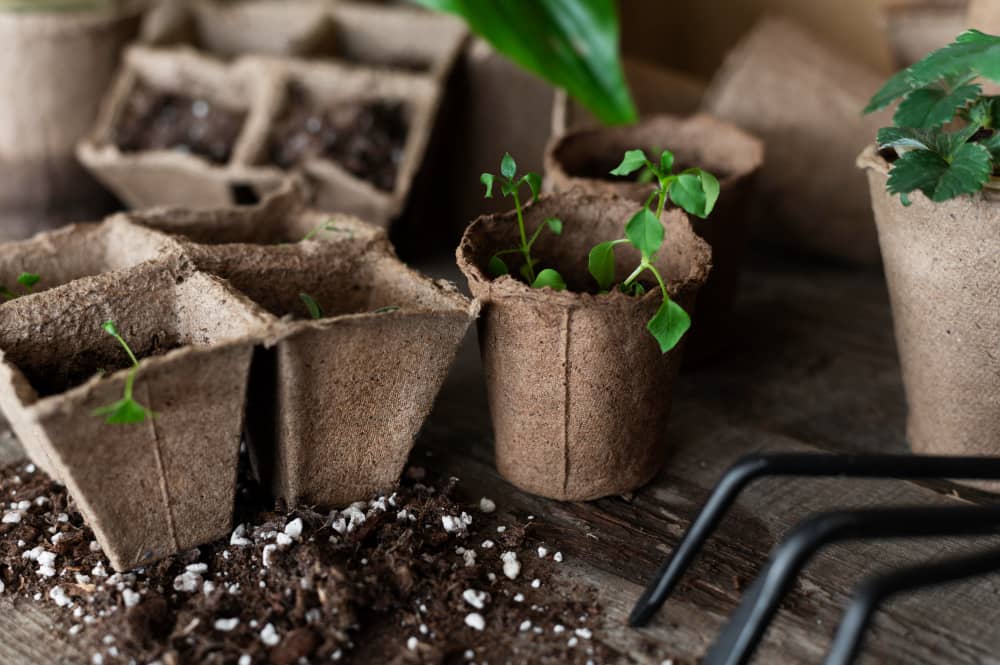
Utilizing Natural Fertilizers
When fertilizing your garden, you can take a sustainable approach that will harmonize with nature. Natural fertilizers are one of the best ways to nourish plants without depleting the environment. Here are some of the critical types of natural fertilizers, as well as the benefits of using them.
Compost: Compost is one of the most widely used natural fertilizers. It is a combination of organic materials such as plant leaves, grass clippings, and kitchen waste that has been broken down into a nutrient-rich material. Compost is an excellent source of nitrogen, phosphorus, and potassium — three essential nutrients plants need to grow healthy and strong. Compost also encourages beneficial soil organisms such as earthworms and fungi, which help further improve soil texture and water retention.
Manure: Manure is another natural fertilizer complete with plant nutrients. You can use either fresh manure or composted manure for your garden. Fresh manure is an excellent source of nitrogen and other essential nutrients but can burn and damage plants if it is not correctly aged. Composted manure, on the other hand, is a safer alternative that still provides an abundance of nutrients.
Worm Castings: Worm castings are produced by earthworms as they digest and process organic material. They are high in nitrogen, phosphorus, and potassium and are an excellent source of micronutrients. Worm castings also help improve soil structure and drainage and stimulate the growth of beneficial soil organisms.
Seaweed: Seaweed is an excellent source of organic matter and micronutrients, such as iron, zinc, and boron. It also helps improve the soil structure and stimulate the growth of beneficial bacteria and fungi growth. Seaweed is a great choice for sandy soils, as it helps to improve moisture retention and nutrient uptake.
Benefits of Natural Fertilizers
Using natural fertilizers can benefit your garden in a variety of ways. For starters, they are much more environmentally friendly than chemical fertilizers. Natural fertilizers are also a great source of essential nutrients for your plants. Furthermore, they help to improve soil structure and stimulate the growth of beneficial organisms. Finally, natural fertilizers are economical since they can be quickly produced with compost and manure at home.
Utilizing natural fertilizers is a great way to nourish your garden while maintaining sustainability. Not only are they better for the environment, but they also provide your plants with the nutrients they need to thrive. You can create a healthy, lush garden that works harmoniously with nature with natural fertilizers.
Conclusion
Sustainable gardening is a way of gardening that helps to promote a healthy environment by working in harmony with nature. By utilizing native plants, natural weed control, suitable soil, conserving water, intercropping, crop rotation, reducing pests, and using natural fertilizers, we can create beautiful, healthy, and sustainable gardens.
Native plants are an essential part of sustainable gardening. Native plants adapt to their environment, require little maintenance, and no pesticides or artificial fertilizers. Using native plants helps conserve water, attract beneficial insects, and provide habitat for wildlife.
Weed control is essential for all gardens, and sustainable gardens should use natural identification and removal methods. By understanding weeds and their lifecycles, gardeners can identify and remove weeds before they become a problem.
Choosing suitable soil is essential for all gardens, especially for sustainable gardens. Composting is a great way to improve your garden’s soil quality while reducing the amount of waste sent to the landfill. Compost is rich in nutrients and helps to build healthy soil for your plants.
Conserving water is an essential part of sustainable gardening. Selecting water-conserving plants and installing rain barrels can help to reduce the amount of water used in the garden.
Intercropping and crop rotation can help to promote a healthy garden and improve yield. Intercropping is a technique where two or more crops are planted together. This can help to reduce pests and increase the fertility of the soil. Crop rotation should be practiced regularly and can help to reduce pests, increase soil fertility, and avoid soil depletion.
Reducing pests is essential for all gardens, but sustainable gardens should use natural repellents and attract beneficial insects. Natural repellents can help to reduce pest populations and encourage healthy insect populations. Attracting beneficial insects can provide an additional layer of protection to the garden.
Utilizing natural fertilizers is another vital part of sustainable gardening. Natural fertilizers provide essential nutrients to the soil and can help to reduce the need for chemical fertilizers. Natural fertilizers can also help to enrich the soil and promote healthy growth.
Sustainable gardening is a great way to help protect our environment and create beautiful and healthy gardens. By utilizing native plants, natural weed control, suitable soil, conserving water, intercropping, crop rotation, reducing pests, and utilizing natural fertilizers, we can create beautiful, healthy, and sustainable gardens. These steps will help reduce the amount of water, fertilizer, and pesticides used and encourage healthy and vibrant plants and wildlife.
Post Disclaimer
The information contained in this post is for general information purposes only. The information is provided as is and while we endeavour to keep the information up to date and correct, we make no representations or warranties of any kind, express or implied, about the completeness, accuracy, reliability, suitability or availability with respect to the website or the information, products, services, or related graphics contained on the post for any purpose.
These statements have not been evaluated by the FDA and are not intended to diagnose, treat, cure or prevent any disease or health condition. If you have specific healthcare concerns or questions about the products displayed, please contact your licensed healthcare professional for advice or answers.

